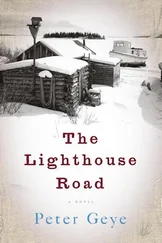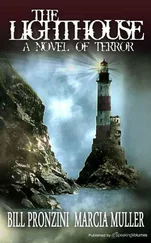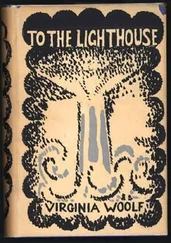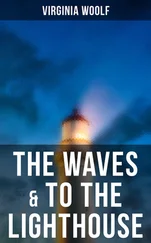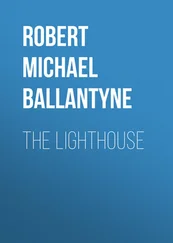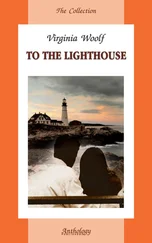There were also more imaginative protestations. John Cowtrey, a skipper from Largs, complained that a light on the Isle of May would only guide ships to destruction on the nearby Inchcape and Carr rocks. George Scot, another skipper from Dysart, complained that since the light would not be visible in a snowstorm, there was no point in having one. Richard Ross, a merchant in Bruntisland, thought that boats would always be wrecked on the isle, and that a light would make no difference. James Lochoir, a skipper from Kinghorn, believed that ships which ran aground on the isle were stupid, and no light on earth would save them from their own imbecility. Exactly the same crop of complaints arose with subsequent lights; even when the benefits were there for all to see, there were plenty of souls who resolutely refused to acknowledge their usefulness.
Down in England, the protests were even more elaborate. Curiously, many of those complaints came from the lighthouse service itself. Like the NLB, Trinity House was impoverished for much of its early existence, since the Crown had originally given it the authority to build lights, but not to charge for them. It therefore spent much of its life finding ingenious new ways to wriggle out of its duties. During the seventeenth-century debate over the construction of the lights at North and South Foreland near Dover, Trinity House objected on the grounds that lights would only alert foreign ships to the British coast. They complained bitterly of ‘such costly follies as lighthouses…The Goodwins [the notorious Goodwin Sands] are no more dangerous now than time out of mind they were, and lighthouses would never lull tempests, the real cause of shipwreck.’ And, as they concluded with a final, divine flourish of illogic, ‘If lighthouses had been of any service at the Forelands the Trinity House as guardians of the interests of the shipping would have put them there.’
The most serious threat to the lighthouses, and one which was to bother both Thomas and Robert for far longer, were the wreckers. They, unlike the shipowners, the skippers or even Trinity House, had a vested interest in ensuring that ships were destroyed. Many coastal villages staked their livelihoods on the exotic plunder to be found in dead and dying ships; the wreckers saw their lootings as a perk of nautical life and bitterly resented any attempts to interfere. As Thomas discovered, the wreckers were furious at the prospect of a safer sea.
The increase in shipping, and the consequent increase in shipwrecks, meant that by the late eighteenth century, they were thriving on salvage and theft. Wrecks were so frequent that many coastal populations had come to regard the cargo as their right. Sailors who survived gales and destruction were often murdered by locals within sight of the shore, and certain areas of the country became notorious for wreckers’ exploits. In the south, it was claimed by one early historian that
If a wreck happened to occur in Cornwall while Divine Service was being held, notice of it was given out from the pulpit by the parson. It is said of the wreckers, I know not with what truth, that the strongest among them would swim out through the breakers and drown the exhausted survivors by thrusting them under water as the poor wretches struggled, with failing strength, to reach the shore. There were even pious fanatics who went so far as to admonish the people that it was sinful to succour a vessel in distress upon the Sabbath; that it was, in fact, sinful to save life. On the other hand, refusal to do so was a proof of true religiousness since it showed that they realised it was God’s will that the ship should sink and the crew perish.
Some shipwreck survivors would be saved by a stray compassionate soul; more often they were regarded as a dangerous inconvenience and left to die. The wreckers worked furtively, away from the censorship of officialdom, and did what they could to prevent the local customs officers from becoming too curious. In many cases, those officials were either easily corruptible or practised at turning a blind eye. Their leniency was perhaps understandable, since in many areas of Britain the population desperately needed the sea’s harvest. The Hebrides in particular included islands naked of a single tree, and their islanders were forced to import even the most basic materials for life. They thus relied heavily on driftwood and wreck to build their houses, make their boats, warm their families and cultivate their food, and they regarded Thomas and his mirror-lamps as a mortal threat not just to their livelihood but to their lives.
More awkwardly, the wreckers could, with some justification, claim salvage from a ship as a legal right. Until 1852 and the Customs Consolidation Act which appointed official Receivers of Wreck, the law remained confused and uneasy, and little could be done to prevent thefts. Previously, all wrecks in British waters came under the jurisdiction of the Lord Admiral whose role was to take ‘cognisance of the death of man, and mayhem done in great ships’, and who delegated responsibility to lord lieutenants in each county. All cargo was divided into four categories: flotsam – cargo that floated; jetsam – jettisoned cargo abandoned by the crew in their attempts to save the ship; ligan – cargo that sank and was marked with a buoy for later retrieval, and wreck – the cargo that was washed ashore. For many years, all four types became the subject of an undignified wrestle between the finder, the landowner, and the Crown. If the rightful owner did not claim his cargo within a year and a day, it was forfeit to the Crown, although the finder was entitled to a reward proportionate to the value of the goods.
Landowners could claim the ‘privilege of right’ to anything washed up on their foreshores. Their tenants then adapted that privilege to suit themselves. Wreckers took advantage of the silences in legislation to justify their lootings either under civil law, or under a shrewd interpretation of divine justice. Eventually, the impasse developed into a very British truce, part opportunism, part Queensberry Rules, and part amateur criminality. With the increase in customs and smuggling patrols during the early nineteenth century, wreckers realised that their safest chance lay in staying within the law; if they came across a stricken ship, they must rescue the crew first, but, having done so, the ship became theirs to plunder or sell as they pleased. The practice still exists to this day; any ship (other than those of the coastguard or RNLI) that assists another ship in distress is entitled to claim a portion of the value of that ship in return for saving the lives of the crew. Given that a captain therefore risks forfeiting his ship, this also gives rise to the reluctance of many crews to issue Mayday calls, even in extremis.
The early wreckers also brought a certain grim ingenuity to their tasks. Many locals in areas in which ships were regularly wrecked did not just wait for disaster; they created it. Luring ships onto the rocks was a particular favourite. The Scilly Isles, the West Country and the Hebrides were all rumoured to have wreckers who put up false lights to guide the mariner onto the rocks. It was easy enough to light a bonfire on a dangerous coastline, or tie a lantern to a horse’s tail so it imitated the swinging of a ship’s light. For a while, the first lighthouses only made the situation worse. The local wreckers, aware that ships relied on the towers to know their position near land, set up rival lights nearby in order to beguile the pilots away from their true course and onto the nearby coast. There were other methods as well. The Wolf Rock, eight miles south-west of Land’s End, was a notorious hazard for shipping, and was regarded by the local Cornish wreckers as an excellent source of plunder. Within the rock, however, there was a cavern hollowed out over centuries by the movement of the tides. When the waves crashed through it, trapping and then releasing the air within, the cavern made a sound eerily similar to a wolf’s howl. The wreckers, worried that the lonely baying of the rock would alert ships to the Wolf’s existence, stopped up the cavern with stones to silence it.
Читать дальше

